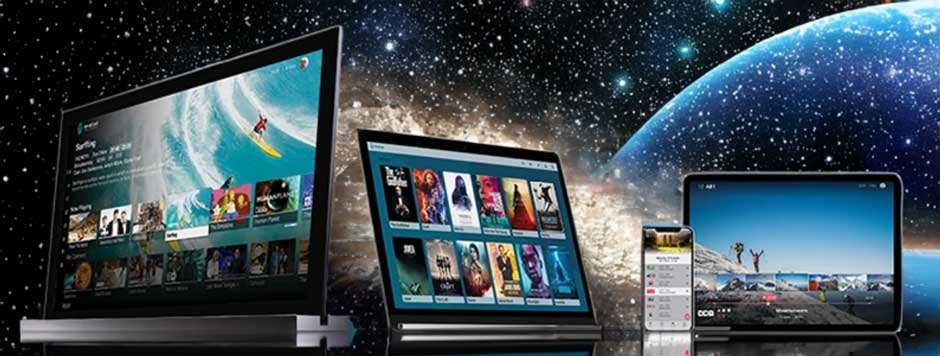Skip to the good bit
ToggleAs the demand for seamless, personalized, and cross-platform content intensifies, IPTV and OTT services are rapidly redefining the boundaries of digital television. IPTV (Internet Protocol Television) and OTT (Over-The-Top) platforms are at the forefront of this evolution, integrating innovative features to enhance user experience, content delivery, and monetization strategies.
This article talks about the key innovations for the next generation of streaming services.
The Evolution of IPTV Consumption
In the early 2000s, IPTV emerged as a novel method of delivering television content over internet protocols, offering an alternative to traditional broadcasting methods. Initially, adoption was gradual, hindered by limited broadband penetration and consumer unfamiliarity. However, as high-speed internet became more widespread and devices like smart TVs and smartphones appeared, IPTV gained significant traction.
By 2025, the global IPTV market is projected to reach $187.01 billion, growing at a compound annual growth rate (CAGR) of 16.6% from 2024. This growth is fueled by several factors:
- Consumers increasingly prefer watching content at their convenience, leading to a surge in video-on-demand (VOD) services.
The ability to access content across various devices—smart TVs, tablets, smartphones—has become a standard expectation. - Advanced algorithms now curate content tailored to individual preferences, enhancing user engagement.
These shifts signify a move away from linear programming towards a more flexible, user-centric model of content consumption.
Then vs. Now: The Changing Face of IPTV & OTT Consumption
In the early 2010s, IPTV was a niche technology, mostly used in hotel systems or private networks. Meanwhile, OTT platforms like Netflix and Hulu were disrupting traditional television with subscription-based models. Fast forward to today, and IPTV has matured into a mainstream option, especially in regions with large diasporas eager to watch home-country content, such as Albanian viewers seeking “IPTV shqip Smart TV download” options.
Modern users expect more than linear broadcasting—they want personalized recommendations, pause-and-resume functionality, cloud DVR, and access to their favorite channels across devices. This has made features like multi-device syncing and cross-platform compatibility essential. The phrase “download IPTV shqip” has grown in popularity as international viewers look for easy ways to stay connected with content in their native language.
Key Innovations Driving the Future
1. Cloud-Based Infrastructure
Cloud architecture allows IPTV and OTT services to scale dynamically, offer seamless streaming, and reduce latency. It also enables faster deployment of new features and easier content management. Providers are increasingly shifting from local servers to cloud environments to maintain uptime and streamline operations.
2. AI-Powered Personalization
Algorithms analyze user behavior in real time to create hyper-personalized viewing experiences. Beyond just content suggestions, AI is now being used to optimize streaming quality based on device type and network conditions.
3. Server-Side Ad Insertion (SSAI)
Monetization has matured with innovations like SSAI, which allows dynamic ads to be inserted into streams without disrupting the user experience. This technology enables targeted advertising, boosts CPMs, and maintains smooth playback across devices. OTT providers are rapidly adopting SSAI to diversify revenue streams beyond subscriptions.
4. Interactive Features and Gamification
From real-time voting on reality shows to interactive trivia during sports events, gamified elements are increasingly part of IPTV and OTT interfaces. These features deepen user engagement and can drive longer viewing times—an essential metric in an attention economy.
5. Cross-Device Syncing and Smart TV Integration
With audiences shifting between smartphones, tablets, smart TVs, and desktops, seamless syncing has become a baseline expectation. Platforms are investing in robust multi-device architectures to ensure users can start watching on one device and continue on another without interruption.
The Subtle Role of Regional Platforms
Regional IPTV providers are quietly building loyal audiences. For Albanians living abroad, services like NimiTV have become a practical solution for staying connected to news, sports, and entertainment from home. Rather than acting as global disruptors, such platforms thrive by understanding specific linguistic and cultural preferences.
Offering more than 250 Albanian channels, platforms like NimiTV provide tailored content with minimal friction—no satellite installation, no long-term contracts. For users searching for how to stream Top Channel, RTSH, or Klan TV from abroad, apps like these fill a very specific yet high-demand gap.
Conclusion
The future of streaming will not be defined by a single platform or technology, but by the convergence of innovation, user expectation, and cultural relevance. IPTV and OTT providers that succeed will be those who blend cutting-edge infrastructure with localized understanding.
As viewers demand smarter, faster, and more intuitive experiences, the lines between IPTV and OTT continue to blur. For content creators, service providers, and audiences alike, the opportunities have never been more dynamic.







